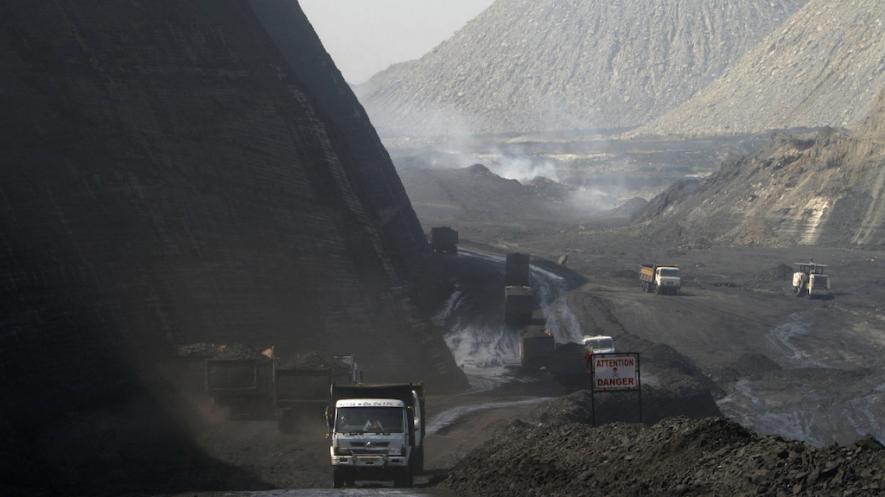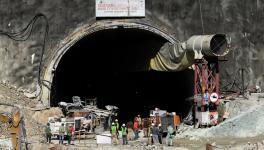Coal Mine in Chhattisgarh will Fall in Elephants’ Path

Coal laden trucks at a mine in Chhattisgarh. | Image Courtesy: The Quint
Coal blocks in India are synonymous with scams and opaque deals. While the original scandal involved opacity in the process of allocating coal blocks, the present issue lies in environmental concerns. In 2014, the National Green Tribunal set aside the then Minister of State for Environment and Forests Jairam Ramesh’s 2011 order regarding coal mining in Parsa East and Kante Basan (PEKB) coal blocks in the ecologically sensitive Hasdeo Arand forest in Chhattisgarh. Four years later, there appears to be a concerted effort on the part of the Chhattisgarh government to restart mining at the Parsa Open Cast Mine.
Open Cast Mining generally tends to devastate large expanses beyond the specific area of operation. Apart from dust and particle matter pollution, minerals can leach into water bodies, and spread even further. The effects of such pollution affect not only the flora and fauna, but also humans, livestock and crops.
Opposition to the mining projects in the PEKB coal blocks has come from the Hasdeo Arand Sangharsh Samiti as well as from the Chhattisgarh Bachao Andolan. However, both the coal blocks at Parsa East and Kante Basan seem inextricably linked to Gautam Adani. According to a Perspective Document on Coal Mining in Hasdeo Arand Region brought out by the Hasdeo Arand Sangharsh Samiti, the project proposer in the PEKB coal blocks was originally Rajasthan Rajya Vidyut Utpadan Nigam Limited (RRVUNL). However, in 2007, the Adani Group floated Adani Mining Private Limited as a fully owned subsidiary. This subsidiary soon entered into a joint venture with the RRVUNL, and formed Parsa Kante Collieries Limited in which Adani’s subsidiary held a 74 per cent stake.
The Adani Group also bagged a contract to construct a rail line through its special purpose vehicle – Sarguja Rail Corridor Pvt. Ltd. – to carry coal from the mines.
In 2012, before the mining operations commenced, Sudiep Shrivastava appealed before the National Green Tribunal (NGT) against the order granting an environmental clearance for the mines. The NGT found that the neither the Forest Advisory Committee (FAC) nor the minister of state had considered aspects other than tree cover. The FAC had taken the tree cover of the area into consideration for recommending that the clearance be rejected. However, the minister of state considered tree cover to approve the environmental clearance. In both cases, the biodiversity of the area had not been considered.
Thus, the NGT set aside the minister of state’s order, and directed both the FAC and the Ministry of Environment and Forests to undertake studies on the biodiversity of the area before making recommendations and passing orders.
Incidentally, the government of Chhattisgarh had previously recommended that the region be declared an elephant reserve, as it formed a part of the elephants’ migratory trail. The Union Government had accepted the proposal. However, in 2013, the Times of India reported that the government of Chhattisgarh clandestinely revoked the entire idea.
The Wire has reported that despite the NGT order, and the opposition to the mining projects, the matter is still under consideration before the Experts Appraisal Committee for considering an environmental clearance. Perhaps, it is due to a certain bigwig’s presence. However, if the clearance for the Parsa Open Cast Mine is granted, apart from the pollution associated with open cast mining, it will heighten human-wildlife conflict, as it lies directly in the elephants’ migratory path. Add to this the rail link being built, and one can conclude that the brunt of all of this will be borne by none other than the locals living around the mine.
Get the latest reports & analysis with people's perspective on Protests, movements & deep analytical videos, discussions of the current affairs in your Telegram app. Subscribe to NewsClick's Telegram channel & get Real-Time updates on stories, as they get published on our website.
























